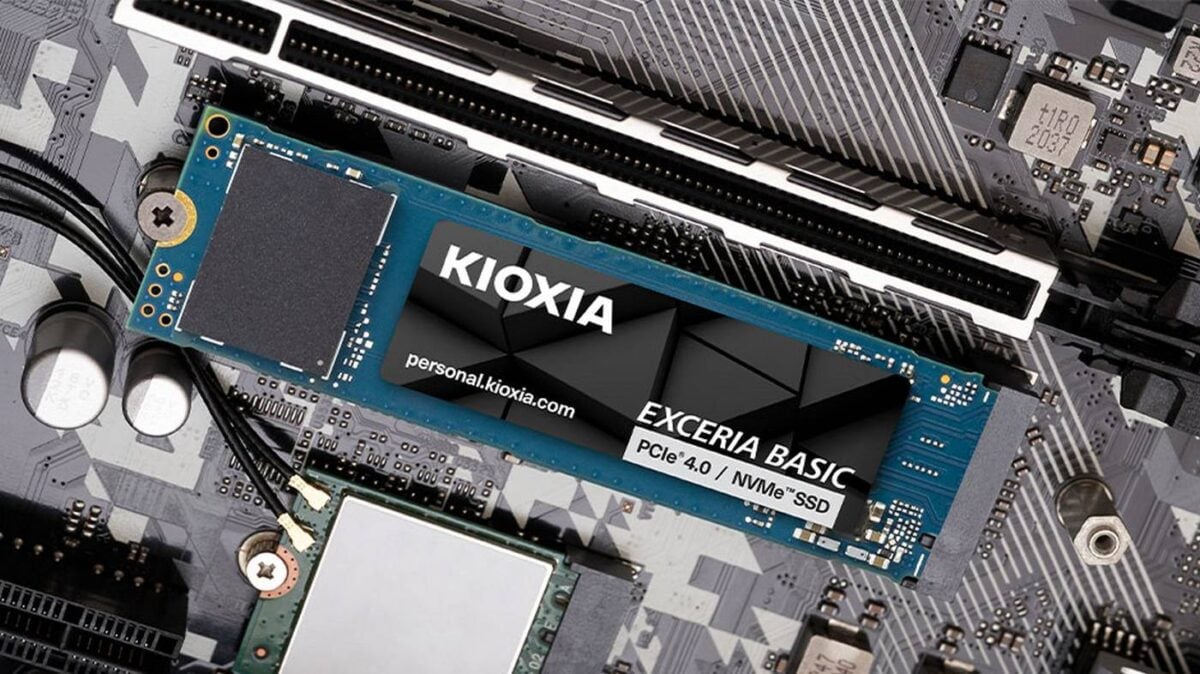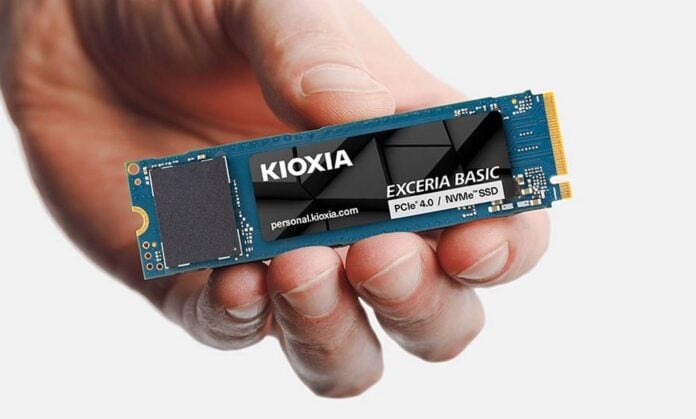Kioxia has announced the Exceria Basic SF10 SSD series touting PCIe 4.0 connectivity and QLC NAND. It is designed for customers who want a fast storage solution without overspending, making it a prime upgrade for any old machine. Anyone moving from an HDD to an SSD can attest to the meaningful experiential upgrade.
The Exceria Basic SF10 joins the brand’s existing consumer range, which includes Exceria Plus and Exceria Pro lineups, offering the same quick response, smooth multitasking, and fast OS boost times while using less-costly components. Unlike its higher-tier siblings which leverage Kioxia’s 218-layer BiCS8 TLC, Exceria Basic SF10 runs on BiCS8 QLC NAND flash that provides higher storage density at the cost of reduced speed and endurance. To cut costs further, Kioxia opts for a DRAM-less Host Memory Buffer (HMB) design, using a small portion of the system’s RAM as a cache/mapping table instead of having a dedicated DRAM chip on the SSD.
Even so, the Exceria Basic SF10 is rated for up to 7,300MB/s sequential read and 6,800MB/s sequential write on its 2TB variant, with the 1TB trailing closely at 7,200MB/s and 6,600MB/s, respectively. Both of these are near the theoretical maximum of its PCIe 4.0 x4 interface, which is impressive for an entry-tier product. Even random-operation speed is great with 1,000,000 read IOPS and 1,250,000 / 1,150,000 write IOPS, respectively.

If you wonder where the trade offs are, well, they are quite subtle, coming in the form of lower sustained performance, which can vary depending on the use case, and lower NAND endurance. The latter is advertised to be 600TBW on the 2TB capacity and 300TBW on the 1TB. For comparison, the Exceria Plus G4 has double that, meaning it should outlive today’s budget offering. That said, this is more than enough for most users, and should suffice for years of heavy use. Do remember this is a guide only; this figure doesn’t mean your drive stops working.
“Upgrading your PC or notebook should be a simple, affordable and most importantly deliver a noticeable boost in performance,” said Paul Rowan, Vice President and Chief Marketing Officer at KIOXIA Europe. “That’s exactly what the EXCERIA BASIC SSD series is designed to do. To provide everyday users faster load times, smoother multitasking and a more responsive experience, all without stretching their budget.”
The Exceria Basic SF10 SSD series will be available in Q4 2025 at an undisclosed price, though Kioxia accentuates the fact that this is an affordable solution backed by a five-year warranty. Based on current market prices, we expect the 1TB version to retail below $80 / £70, since any higher would put it against TLC-based drives like the WD_BLACK SN7100 and MSI Spatium M482.
As of late, NAND and DRAM prices have skyrocketed due to increased demand from AI data centres, with commentators worrying that this situation could last a decade. On the bright side, even if SSDs become expensive, the Exceria Basic should at least remain one the cheaper options.

